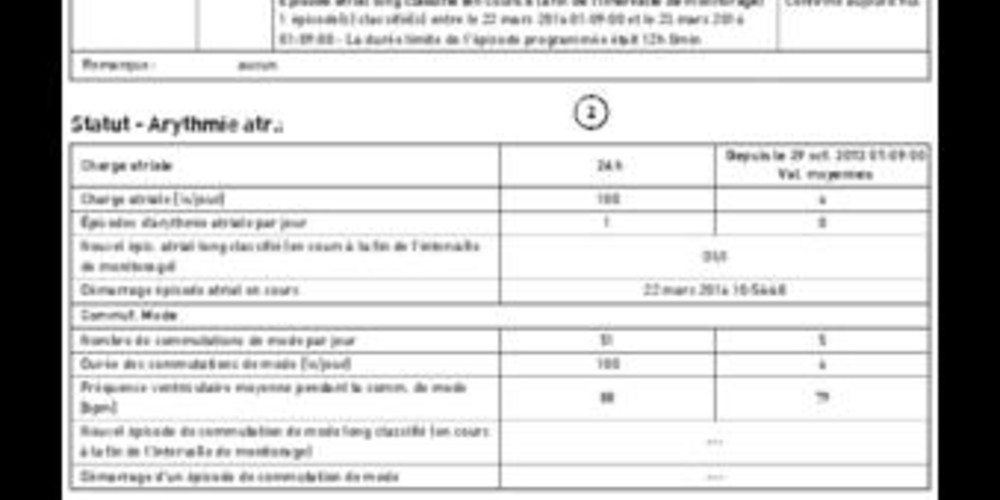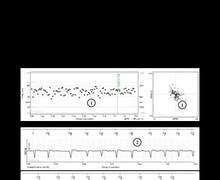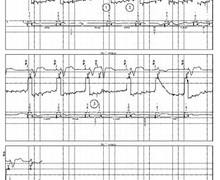Diagnosis of atrial fibrillation by remote monitoring
Tracing
Manufacturer Biotronik
Device PM
Field Management of atrial arrhythmias
N° 28
Patient
88-year-old man implanted with an Evia DR pacemaker for sinus dysfunction with prolonged PR interval; programming in DDD mode; asymptomatic; telemedicine yellow alert message for occurrence of an atrial arrhythmia.

Graph and trace
- yellow alert in the setting of an atrial load above the set limit and of a classified long atrial episode;
- the atrial arrhythmia status shows that the atrial arrhythmia appears permanent over the past 24 hours;
- this plot shows that the atrial arrhythmia is permanent since the outset of this episode with mode switching;
- the HF Monitor status shows that once the atrial arrhythmia had started, the percentage of ventricular pacing had decreased while the ventricular rate had slightly increased and that the patient's activity had decreased indicating a possible poor tolerance to the arrhythmia;
- on this type of platform, the diagnosis of AF is not accompanied by the systematic telemedicine transmission of a recorded EGM at the time of the episode; on the other hand, the sending of an alert message can be accompanied by the sending of a periodic EGM; 3 channels are available: the markers with intervals, the atrial sensing channel and the right ventricular sensing channel; the arrhythmia being prolonged on this tracing, it is possible to confirm the presence of an actual atrial arrhythmia with spontaneous conduction confirming the diagnosis made by the pacemaker;
- the periodic EGM performed 3 months earlier revealed a sinus rhythm with atrial extrasystoles (trigger for the induction of an atrial arrhythmia) with ventricular pacing.
Other articles that may be of interest to you







AF is the most common form of arrhythmia in pacemaker-implanted patients and is associated with increased morbidity and mortality. One of the major interests of remote monitoring is optimizing the management of patients with AF episodes. AF is associated with 2 principal risks: poor hemodynamic tolerance and increased thromboembolic risk. Telemedicine allows an early diagnosis of arrhythmia, particularly asymptomatic episodes, and allows the adjustment of antiarrhythmic medical treatment and the rapid introduction of anticoagulant therapy. In a patient with atrial arrhythmia, irrespective of the chosen therapeutic strategy, telemedicine allows an optimization of the follow-up with
The telemedicine report reveals the AF load, the number of episodes and mode switches, as well as provides histograms, atrial and ventricular rate curves, and pacing percentages. On the other hand, the atrial fibrillation alert was not accompanied by the transmission of an EGM recorded during the episode, which limited the ability to confirm the diagnosis and eliminate any differential diagnoses (crosstalk, oversensing of noise by the atrial lead, etc). This drawback has been addressed in the latest platforms.